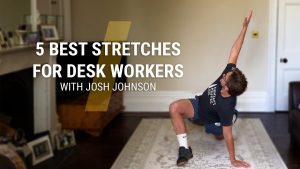How to Stay Active Without a Gym
You can stay active at home when you follow simple and clear steps. You do not need gym equipment to keep your body moving. Your daily routine becomes easier when your activity stays consistent. Many readers on Way Net Working use at home movement habits to support their health and energy. You can do the same with a plan that fits your schedule.
Why Staying Active Matters
Your body needs movement to stay strong. You improve your mood when you move often. You reduce stiffness when you stay active for short periods throughout the day. You also keep your energy stable. These small benefits add up when you repeat them daily.
Start With Short Sessions
You do not need long workouts. Start with ten minute sessions. Add more time once you feel comfortable. Short movement sessions help you stay consistent. You avoid burnout when you start small. You also avoid long gaps between workouts.
Use Your Body Weight
Your body weight can help you build strength. You can do squats, lunges, pushups, step ups, and wall sits. These movements target large muscles. You can adjust the intensity by slowing down or adding more repetitions. You can finish a full strength session in fifteen to twenty minutes.
Walk More During the Day
Walking helps you increase your daily movement. You can walk inside your home. You can walk on your street. Aim for frequent short walks. You improve your circulation with simple steps. You also clear your mind and reduce stress.
Add Stretching to Your Routine
Stretching keeps your muscles flexible. You reduce discomfort when you stretch for five minutes in the morning or evening. Focus on your neck, shoulders, hips, and lower back. These areas carry tension from long sitting hours. Stretching helps your body feel balanced.
Turn Daily Tasks Into Activity
You burn energy when you move more during daily chores. You can clean, organize, or do light yard work. You can lift small items while arranging your home. These movements increase your daily activity without extra equipment. Admin Wells also highlights how simple in home tasks help you stay active when you do them with purpose.
Try Simple Cardio Exercises
You can do high knees, leg raises, marching, or step jacks. These movements increase your heart rate. You can do them in a small space. You can repeat each movement for thirty seconds. Rest for ten seconds before switching to the next one. You can build your own short cardio routine based on your comfort level.
Use Household Items for Resistance
You can use filled water bottles, bags of rice, or books as light weights. You can do rows, presses, and arm raises. You can use a chair for support in balance exercises. These items help you add resistance without buying equipment.
Set a Clear Weekly Plan
Plan your movement schedule for the week. Choose specific days for strength, stretching, and light cardio. Keep each session short. Adjust your plan based on how your body feels. A clear plan helps you avoid long breaks in your routine.
Track Your Progress
Write down your sessions each week. Track your steps, repetitions, and stretching time. You can see your improvements. You stay motivated when you notice progress. You can also adjust your activity levels when your notes show gaps.
Create a Simple Space for Movement
You do not need a large area. Clear a small section of your room. Keep your mat, water bottle, and towel nearby. Your setup helps you start faster. When your space stays ready, you avoid delays.
Stay Consistent With Light Movement
Light movement supports your activity on slow days. You can stretch, walk, or do slow controlled exercises. These easy actions keep your body active even when you have limited time. This habit supports your long term health.
Avoid Overcomplicating Your Routine
Avoid long and intense workouts when you cannot maintain them. Keep your routine simple. Choose clear exercises. Choose short sessions. Your routine grows stronger when you apply it steadily. You save energy and avoid stress when you simplify your plan.
Follow What Your Body Needs
Listen to discomfort. Adjust your pace when needed. Rest when your body feels tired. Stay active without pushing beyond your limits. This helps you avoid injuries and stay consistent.
Use Music or Timers to Stay Engaged
You can set timers for intervals and rest periods. You can use music to maintain rhythm. These small tools help you stay focused and complete your sessions on time.
Mix Different Types of Movement
Rotate between strength, stretching, and light cardio. This keeps your routine balanced. You avoid boredom when you add variety. You also train different muscles throughout the week.
Increase Intensity Gradually
Add more repetitions or longer intervals once you feel comfortable. Increase your walking distance. Hold your stretches a few seconds longer. These small adjustments help you grow stronger without pressure.
Stay Active With Family Members
Invite someone at home to join your sessions. This helps you stay motivated. You also build a shared activity habit. You can plan simple challenges or walk together in the evening.
Make Movement a Daily Habit
Choose a fixed time for movement. Your habit becomes easier when you repeat it at the same time daily. You can choose morning sessions to start your day with energy or evening sessions to unwind.
Final Thoughts
You can stay active without a gym when you follow a clear and simple routine. You only need commitment and consistency. Gravity Bird often highlights how small daily habits support long term health and balance. Use these steps to stay active at home. Start small, stay steady, and adjust your plan based on what works for you.




